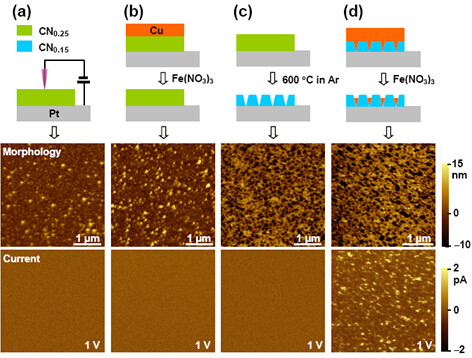The memristor was originally envisioned in 1971 by circuit theorist Leon Chua as a missing non-linear passive two-terminal electrical component relating electric charge and magnetic flux linkage. According to the characterizing mathematical relations, the memristor would hypothetically operate in the following way: The memristor’s electrical resistance is not constant but depends on the history of current that had previously flowed through the device, i.e., its present resistance depends on how much electric charge has flowed in what direction through it in the past. The device remembers its history - the so-called non-volatility property: When the electric power supply is turned off, the memristor remembers its most recent resistance until it is turned on again. In 2008, a team at HP Labs claimed to have found Chua's missing memristor based on an analysis of a thin film of titanium dioxide. The memristive devices are intended for applications in nanoelectronic memories, computer logic and neuromorphic/neuromemristive computer architectures.
Recently, Prof. Fei Zhuge, from Research Group of Functional Thin Films & Integrated Devices led by Prof. Hongtao Cao in Ningbo Institute of Materials Technology and Engineering (NIMTE, CAS), successfully synthesized an amorphous carbon thin film with through conical pores of several tens of nanometers in size by annealing magnetron sputtered nitrogen-doped carbon thin films at elevated temperature in an inert atmosphere. Based on this nanoporous carbon film, forming-free resistive switching was achieved in a carbon-based memristive device containing ready-made metal nanofilaments (see Fig. 1). The metal filaments confined in conical nanopores was found to have a single-crystalline structure with lattice defects, such as dislocations (see Fig. 2). The corresponding memristive device shows outstanding high temperature retention performance for both ON and OFF states. Furthermore, continuous RESET (ON-to-OFF switching) and SET (OFF-to-ON switching) processes have been realized in such device, indicating that it can potentially be used as an electronic synapse device. The results have been published on Carbon (76, 459-463, 2014) and Applied Physics Letters (106, 083104, 2015), and two related Chinese patents have been filed (201310445981.6 and 201310446932.4).


Prof. Hongtao Cao: h_cao@nimte.ac.cn Prof. Fei Zhuge: zhugefei@nimte.ac.cn
Research Group Url: http://english.nimte.cas.cn/rh/rd/newmaterials/mstffd/mstffd_research_interests/
All Images by![]()

